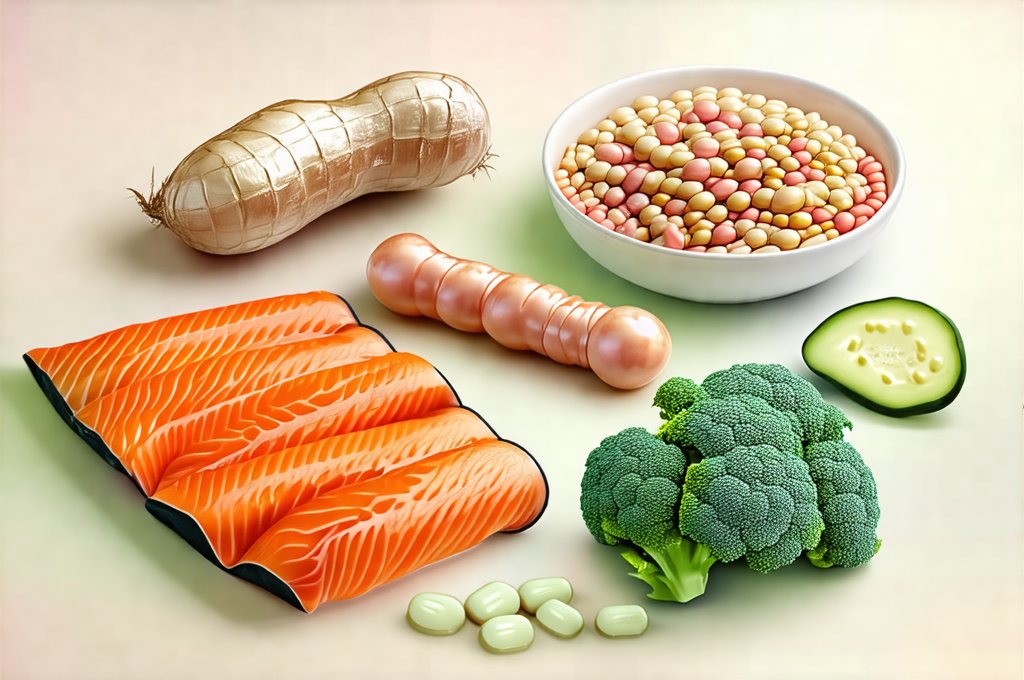Acid reflux, gastroesophageal reflux disease (GERD), and general stomach discomfort are frustratingly common ailments affecting millions worldwide. These conditions often manifest as heartburn, regurgitation, bloating, gas, and a persistent sense of unease in the digestive system. While many factors contribute to these issues – diet, lifestyle, stress levels – emerging research increasingly points to the gut microbiome’s pivotal role. A healthy gut isn’t just about digestion; it’s intricately linked to overall health, including the proper functioning of the esophageal sphincter and the reduction of inflammation that can exacerbate reflux symptoms. Many conventional treatments focus on neutralizing stomach acid naturally, or reducing its production, but this doesn’t address the underlying cause in many cases.
The exciting area of probiotic foods offers a complementary approach. Probiotics are live microorganisms—primarily bacteria—that, when consumed in adequate amounts, confer health benefits to the host. They work by restoring balance to the gut microbiome, enhancing digestive function, and potentially reducing inflammation. Incorporating probiotic-rich foods into your diet isn’t a quick fix, but it can be a sustainable strategy for managing symptoms and promoting long-term digestive wellbeing. It’s important to remember that everyone is different, and what works for one person may not work for another, highlighting the need for individualized exploration and, when necessary, professional guidance. Consider also exploring foods that soothe the stomach after episodes of discomfort.
The Science Behind Probiotics & Digestive Health
The connection between gut health and acid reflux/GERD isn’t always immediately obvious. However, a disrupted microbiome – often caused by factors like antibiotics, poor diet, or chronic stress – can lead to dysbiosis, an imbalance of beneficial and harmful bacteria. This imbalance can impair the digestive process, increase intestinal permeability (often called “leaky gut”), and contribute to inflammation throughout the body. Inflammation is a key driver in many GERD cases because it weakens the lower esophageal sphincter (LES), the muscle that prevents stomach acid from flowing back up into the esophagus. Probiotics help restore microbial balance, strengthening the gut barrier function and potentially reducing inflammatory responses.
Furthermore, certain probiotic strains can directly influence gastric emptying, the rate at which food moves through the digestive system. Slower gastric emptying increases the risk of reflux, while faster emptying may overwhelm the digestive process leading to discomfort. A balanced microbiome, supported by probiotics, helps regulate this process ensuring optimal digestion and minimizing the likelihood of acid backflow. It’s crucial to understand that not all probiotic strains are created equal; different strains have different effects, so choosing foods with a diverse range of beneficial bacteria is often most effective. You may also want to review foods that commonly trigger gas and discomfort to avoid them when incorporating probiotics.
Finally, probiotics can also impact the production of short-chain fatty acids (SCFAs) when they ferment dietary fiber in the colon. SCFAs like butyrate play a vital role in gut health by nourishing colon cells, reducing inflammation, and improving overall digestive function. This contributes to a stronger, healthier gut barrier, further minimizing the risk of reflux and related symptoms.
Fermented Dairy: Yogurt & Kefir
Yogurt and kefir are perhaps the most well-known sources of probiotics, but their probiotic content can vary significantly depending on how they’re made. Look for yogurts labeled “live and active cultures” – this indicates that the beneficial bacteria are present in sufficient quantities to provide a health benefit. Greek yogurt is often a good choice as it tends to have higher protein content and may retain more probiotics through processing. However, be mindful of added sugars, which can negate some of the benefits. Unsweetened varieties are always preferable.
Kefir, a fermented milk drink originating from the Caucasus Mountains, generally contains a wider variety of probiotic strains than yogurt. It’s made by adding kefir grains (a symbiotic culture of bacteria and yeasts) to milk, resulting in a tangy, slightly effervescent beverage. These grains aren’t actually “grains” at all but colonies of microorganisms that ferment the lactose in milk. Kefir also tends to be more easily digestible than yogurt for some individuals due to its fermentation process. It is important to note that people with dairy sensitivities or allergies should exercise caution when consuming these products, and there are non-dairy kefir options available now made from coconut water or other plant milks. You might consider protein sources easier on the stomach as well, especially if you have sensitivities.
To maximize the benefits:
1. Choose plain, unsweetened varieties of yogurt and kefir.
2. Look for labels indicating “live and active cultures” or a high probiotic count.
3. Incorporate them into your diet regularly – as part of breakfast, snacks, or even smoothies.
Fermented Vegetables: Sauerkraut & Kimchi
Sauerkraut, traditionally made from finely shredded cabbage fermented with lactic acid bacteria, is another excellent source of probiotics. Authentic sauerkraut isn’t the vinegar-soaked variety found on many supermarket shelves; it should be raw and unpasteurized to retain its live cultures. Similarly, kimchi – a staple in Korean cuisine – is made from fermented vegetables, typically napa cabbage and Korean radish, with various seasonings like chili pepper flakes, garlic, and ginger. The fermentation process creates a complex flavor profile and a rich probiotic content.
The probiotics found in sauerkraut and kimchi can help improve digestion, reduce inflammation, and strengthen the gut barrier. They also offer additional nutritional benefits from the vegetables themselves – vitamins, minerals, and fiber. However, like dairy products, it’s important to be mindful of sodium content, as some commercially available versions may contain high levels of salt. Consider making your own sauerkraut or kimchi at home to control the ingredients and ensure a truly probiotic-rich product. A well planned dinner menu can also help minimize discomfort.
Probiotic Beverages: Kombucha & Water Kefir
Kombucha, a fermented tea drink, has gained immense popularity in recent years. It’s made by fermenting sweetened black or green tea with a SCOBY (symbiotic culture of bacteria and yeast). The resulting beverage is slightly effervescent and contains a variety of probiotics along with antioxidants from the tea. Water kefir, on the other hand, is fermented sugar water using kefir grains – similar to milk kefir but designed for non-dairy fermentation. It’s a lighter, more refreshing alternative to kombucha.
While both beverages can offer probiotic benefits, it’s important to be aware of potential issues. Kombucha often contains small amounts of alcohol as a byproduct of fermentation, and some commercial versions may have added sugars. Water kefir is generally lower in sugar but still requires careful monitoring if you’re managing blood sugar levels. As with all fermented foods, start slowly to assess your tolerance and avoid digestive upset. Look for brands that are transparent about their fermentation process and probiotic content. Choosing organic options can also minimize exposure to pesticides and other unwanted chemicals. Be aware of foods that feel healthy but may actually contribute to acid production.
It’s important to emphasize that incorporating these probiotic-rich foods should be part of a holistic approach to managing acid reflux, GERD, and stomach discomfort. Lifestyle factors like stress management, mindful eating, weight management, and avoiding trigger foods (caffeine, alcohol, spicy foods, fatty foods) are equally crucial for long-term relief. If symptoms persist or worsen, it’s essential to consult with a healthcare professional to rule out underlying medical conditions and develop an individualized treatment plan.


















